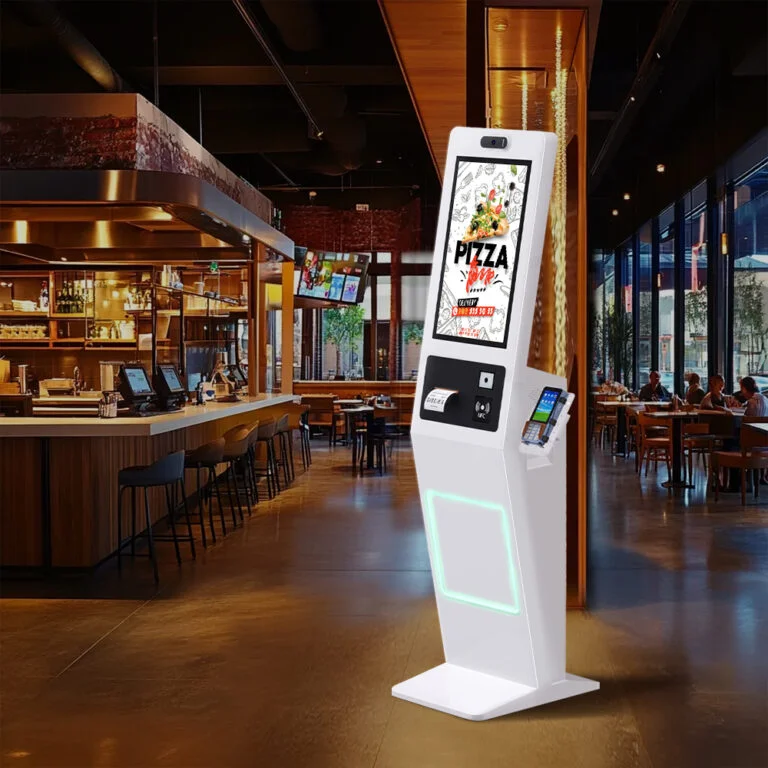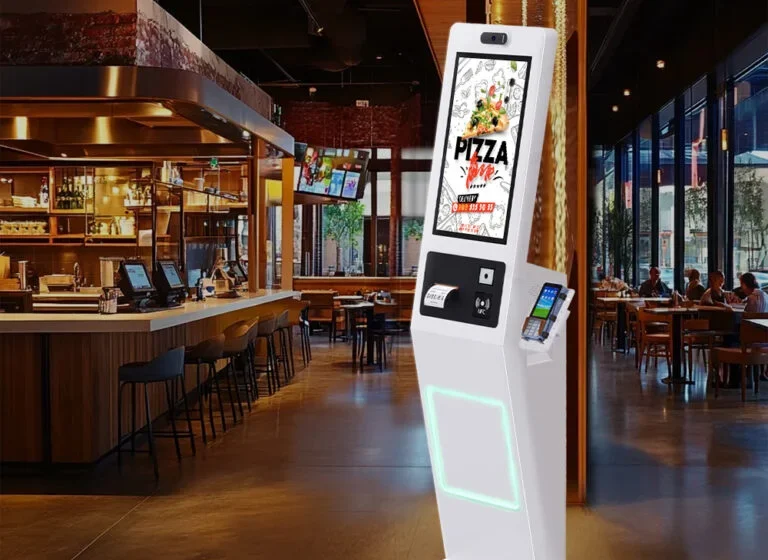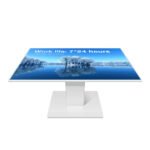Digital Transformation: Is a Self Order Kiosk the Future of Your Digital Signage Strategy?
Self-service is no longer just a trend; it has become a fundamental expectation in the modern consumer landscape. For businesses that rely on customer interaction, particularly those in the digital signage ecosystem, the integration of a self order kiosk is rapidly transitioning from a high-tech novelty to a commercial necessity. This shift is especially pronounced for digital signage users—the very people who understand the power of dynamic, visual communication. Therefore, the essential question is: Are you maximizing your digital investment by embracing the self-ordering revolution?
A self order kiosk represents a powerful evolution of traditional digital signage, moving the display from a passive advertising medium to an active, transactional hub. For digital signage product users, this technology offers a practical, high-value application for their display hardware, delivering real operational efficiencies and a tangible return on investment. The core value of a self order kiosk lies in its ability to empower the customer, streamline business processes, and unlock significant revenue potential, all within a sleek, interactive form factor that aligns perfectly with a modern visual brand strategy.
This comprehensive guide will explore the profound impact of the self order kiosk, focusing on its seamless integration into the digital signage domain, its operational advantages, and the ethical responsibility that comes with deploying such a powerful customer-facing tool. Our aim is to provide digital signage product users with the insights needed to make an informed, value-driven decision for their business.
The Strategic Nexus: Self Order Kiosk as Advanced Digital Signage

A self order kiosk is fundamentally an interactive digital display system designed to enable customers to browse, select, customize, and pay for products or services without requiring direct staff assistance. In the context of digital signage, this system leverages high-quality touchscreens, robust enclosures, and specialized software to create an intuitive, self-guided experience. The shift is from a ‘look-and-see’ screen to a ‘touch-and-transact’ station, exponentially increasing the value and utility of the hardware.
Enhancing the Customer Experience: Control and Convenience
The primary and most immediate benefit of deploying a self order kiosk is the dramatic enhancement of the customer experience. Modern consumers value control and speed above almost all else. Long queues and miscommunication with staff are major sources of frustration that can lead to lost sales and negative sentiment. A well-designed self order kiosk addresses these pain points directly.
Customers are given the autonomy to take their time browsing the menu or product catalog at their own pace. They can meticulously customize their orders, adding or subtracting elements without the pressure of a staff member waiting. This personalized control drastically reduces order errors—a key factor in customer satisfaction. Furthermore, the self-service model inherently reduces wait times, improving customer flow and allowing staff to focus on more complex tasks, such as order preparation or high-value customer service. The overall result is a smoother, more efficient, and ultimately more satisfying interaction that builds genuine brand loyalty.
The Operational Uplift: Efficiency and Accuracy
Beyond customer satisfaction, the operational benefits for businesses are substantial. Introducing a self order kiosk automates the most routine, time-consuming task: order entry and payment processing. This automation allows for the strategic reallocation of labor, directing employees to value-added activities rather than transactional ones. The reduction in human error is another significant advantage; orders are submitted directly and clearly to the kitchen or service area, minimizing costly mistakes and food waste.
Moreover, the kiosk provides a stable, predictable platform for transactions, functioning consistently throughout the busiest rush hours without the fatigue that can affect human staff. This unwavering reliability ensures that the business can maintain a high level of throughput and service quality, even under intense demand. For businesses with multiple locations, a centralized Content Management System (CMS), a standard feature in high-quality digital signage products, allows for instant, system-wide updates to pricing, promotions, and menu items, ensuring brand and offer consistency everywhere.
Capitalizing on Revenue: Dynamic Content and Upselling

A self order kiosk transforms the passive upsell attempt by an employee into a dynamic, data-driven visual experience. This feature is a game-changer for revenue generation.
Visual Appeal and Strategic Upselling
High-resolution, vibrant digital displays are inherently more engaging than static print menus. The kiosk utilizes this visual power by pairing products with compelling, high-quality images and video clips. More importantly, the software powering the kiosk allows for intelligent and targeted upselling. Unlike a fixed menu board, the kiosk can present relevant add-ons, complementary items, or tiered promotions based on the customer’s real-time selection. For example, if a customer orders a burger, the system can instantly prompt them with an image of a ‘Perfect Pairing’—a side of fries and a drink—with a tempting combo price. This strategic, visual prompting is highly effective, with case studies in the quick-service restaurant industry showing a measurable increase in average transaction value. The kiosk is essentially a silent, hyper-efficient salesperson that never forgets to recommend the highest-margin items.
The Power of Data and Personalization
A major advantage for digital signage users is the sophisticated data collection capabilities integrated into modern self order kiosk systems. Every tap, selection, and transaction is a valuable data point. This rich behavioral data provides deep insights into customer preferences, popular items, peak ordering times, and the effectiveness of specific promotions.
This data is then used to create a more personalized ordering experience. For instance, the kiosk can recognize a repeat customer (via a loyalty program login or mobile integration) and display their ‘usual’ order or suggest new items based on their past purchases. This level of personalization is the bedrock of strong customer relationships and a key differentiator in a competitive marketplace. Businesses can leverage these insights to refine their menu, optimize staffing levels, and launch data-backed marketing campaigns, ultimately driving smarter business decisions.
Integration and Ethical Responsibility: A Vision for the Future

The successful deployment of a self order kiosk is not just about the hardware; it’s about a holistic integration strategy and an acknowledgment of the societal impact.
Seamless Integration into the Digital Ecosystem
For digital signage users, the integration is streamlined. The same robust display and networking infrastructure used for video walls or lobby signage can often be adapted for the kiosk. Key hardware components include high-sensitivity touchscreen displays, durable, vandal-resistant enclosures (especially for floor-standing or outdoor units), and reliable payment modules (card readers, NFC, mobile payment support).
The software is the intelligence of the system. A powerful CMS allows for remote management, content scheduling, and real-time performance monitoring. Crucially, the system must integrate smoothly with the business’s Point of Sale (POS) system and kitchen management system to ensure accurate order transmission. As technology advances, features like AI-powered voice commands, facial recognition for loyalty program sign-in, and full mobile integration will become standard, pushing the boundaries of what a self order kiosk can achieve.
A Responsible Vision: Accessibility and Value
As businesses embrace self-service technology, they must maintain a clear and ethical value proposition. The deployment of a self order kiosk should be viewed not as a tool to completely replace human interaction, but as an enhancement to the service model. It should free up staff to deliver higher-quality human service where it matters most, like problem-solving or providing expert product advice.
Furthermore, design must prioritize accessibility. Interfaces must be intuitive and easy to use for all demographics, including users with visual, cognitive, or mobility challenges. This includes clear, high-contrast visuals, appropriately sized touch targets, and perhaps multi-lingual options. By upholding these values—prioritizing enhanced human interaction and ensuring universal accessibility—businesses demonstrate a commitment to both efficiency and community, reinforcing a strong, trustworthy brand image.
Ultimately, the self order kiosk is the logical next step in the digital signage evolution. It transforms a visually engaging screen into a profit-generating, service-enhancing machine. By focusing on customer empowerment, operational efficiency, and smart, data-driven upselling, the kiosk offers a sustainable and rewarding path forward for any business committed to digital excellence.




